James Edward Buttersworth (1817-1894)
Get a James Edward Buttersworth (1817-1894) Certificate of Authenticity for your painting (COA) for your James Edward Buttersworth (1817-1894) drawing.
For all your James Edward Buttersworth (1817-1894) artworks you need a Certificate of Authenticity (COA) in order to sell, to insure or to donate for a tax deduction.
Getting a James Edward Buttersworth (1817-1894) Certificate of Authenticity (COA) is easy. Just send us photos and dimensions and tell us what you know about the origin or history of your James Edward Buttersworth (1817-1894) painting or drawing.
If you want to sell your James Edward Buttersworth (1817-1894) painting or drawing use our selling services. We offer James Edward Buttersworth (1817-1894) selling help, selling advice, private treaty sales and full brokerage.
We have been authenticating James Edward Buttersworth (1817-1894) and issuing certificates of authenticity since 2002. We are recognized James Edward Buttersworth (1817-1894) experts and James Edward Buttersworth (1817-1894) certified appraisers. We issue COAs and appraisals for all James Edward Buttersworth (1817-1894) artworks.
Our James Edward Buttersworth (1817-1894) paintings and drawings authentications are accepted and respected worldwide.
Each COA is backed by in-depth research and analysis authentication reports.
The James Edward Buttersworth (1817-1894) certificates of authenticity we issue are based on solid, reliable and fully referenced art investigations, authentication research, analytical work and forensic studies.
We are available to examine your James Edward Buttersworth (1817-1894) painting or drawing anywhere in the world.
You will generally receive your certificates of authenticity and authentication report within two weeks. Some complicated cases with difficult to research James Edward Buttersworth (1817-1894) paintings or drawings take longer.
Our clients include James Edward Buttersworth (1817-1894) collectors, investors, tax authorities, insurance adjusters, appraisers, valuers, auctioneers, Federal agencies and many law firms.
We perform James Edward Buttersworth art authentication, appraisal, certificates of authenticity (COA), analysis, research, scientific tests, full art authentications. We will help you sell your James Edward Buttersworth or we will sell it for you.
James Edward Buttersworth was born in Britain and trained in the art of marine painting. His teacher was none other than his own father, Thomas Buttersworth, a well-known marine painter in his own right. By the time he was 30, James had relocated to the America’s and set up a studio in New York. Buttersworth dedicated the entirety of his 60 year career span to painting marine subjects, specifically, ships at sea. Clipper ships were his specialty, but he also painted racing ships and was able to witness and paint the birth of steam ships. More than 600 of his works have been cataloged, each one bearing his unique style and attention to detail.
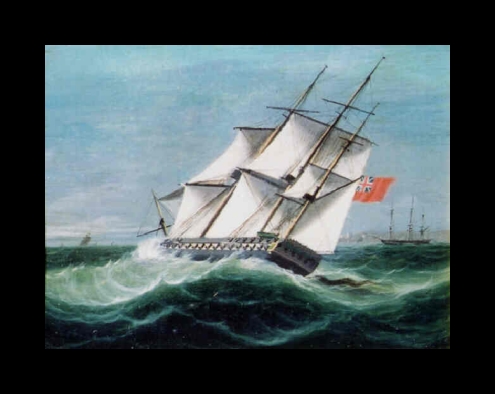
To support his large family in nearby Hoboken, New Jersey, Buttersworth needed to sell some of the work he brought to America. One of his clients turned out to be Currier of Currier and Ives, whom Buttersworth eventually went to work for. Currier turned much of this work into lithographs. During this time, he was also exhibiting in the American Art Union in New York City.
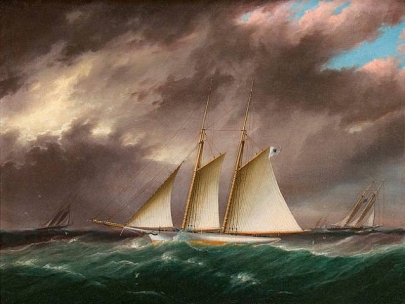
The nature of Buttersworth’s style was highly traditional. He didn’t follow any particular movement other than that of his families’ style of marine painting. While, on a macro level, his work could be labeled “Americana Realism,” Buttersworth’s work was much more. For one thing, he broke away from the more regimented “centered” style and painted his ship compositions in a Z or L shape for a more aesthetic approach . He would break away from other traditions, and make the foreground of his paintings dark and shadowy and the background light. His oil on canvas painting “The Highflyer” (1853) is a perfect example of Buttersworth’s use of dark foreground and light background, as well as a highly detailed sky and sea. Perhaps the most intriguing thing about Buttersworth is that he often chose to paint his pictures from a boat, rather than the shore. Many of his paintings capture the rough seas and ever-changing sky. Maybe it was Buttersworth’s willingness to stray from the shore that made him one of the best known maritime painters today.
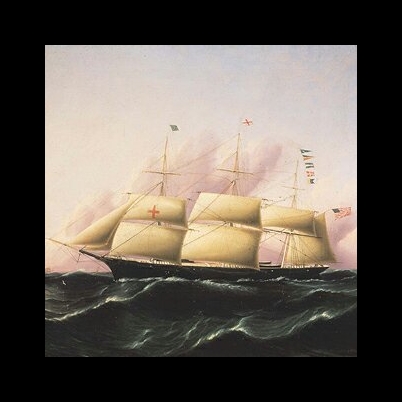
One of the reasons that an original Buttersworth may be hard to authenticate is because his work is so similar to that of the senior artist. Their styles are nearly identical, though subject matter, composition and attention to details vary slightly. For example, James gave high detail in unexpected places, like a breaking wave or the stormy sky. Another way to tell between the two Buttersworths would be to double check the date and location of the painting. Since Buttersworth painted only on American seas after 1847 (with the exception of the 1851 100 pound race), one would assume that anything painted in England after that was done by his father or another relative. Obviously, the senior painter would not have anything credited to his name that was an American scene. Also, look for his signature, which usually appears on the lower right-hand corner of his paintings and is written simply “J.E. Buttersworth.”
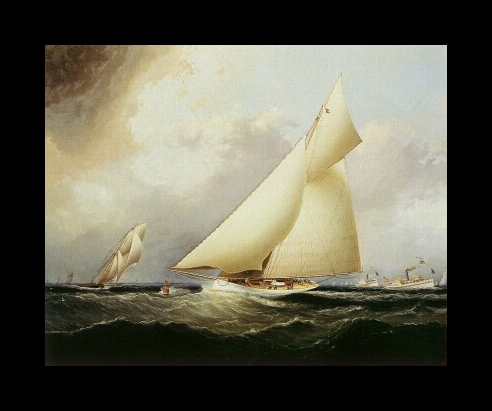
While many of his works are already cataloged, it is entirely possible that a Buttersworth may be in existence and unidentified. Trips by sea, especially entire relocations, were often a hard experience in the 1800’s. It is known that he brought a great deal of his early work with him on this trip, and it is possible that something was lost on the way during his relocation. Furthermore, it is not known that Buttersworth did anything BUT marine paintings of boats. Perhaps in the early stages of his career he dabbled in still-lifes or nudes as most students do, and if these early works were to show up, they would truly be worth a small fortune.
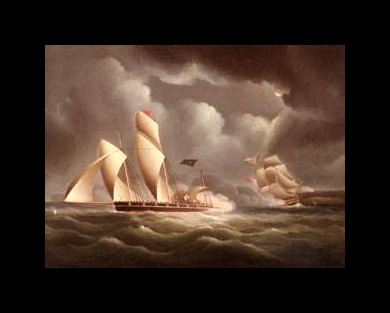
Currently, James Edward Buttersworth’s work appears in many museums in American and in Britain such as the Atwater Kent Museum in Pennsylvania. Buttersworth’s work “Portrait of the Schooner Walter Francis” (1853) is expected to be worth $25,000 to $35,000 when set for auction.
If you believe you own a work of art by James Edward Buttersworth, contact Art Experts. We authenticate, appraise, research and provide Certificates of Authenticity (COA's) for works by James Edward Buttersworth.
